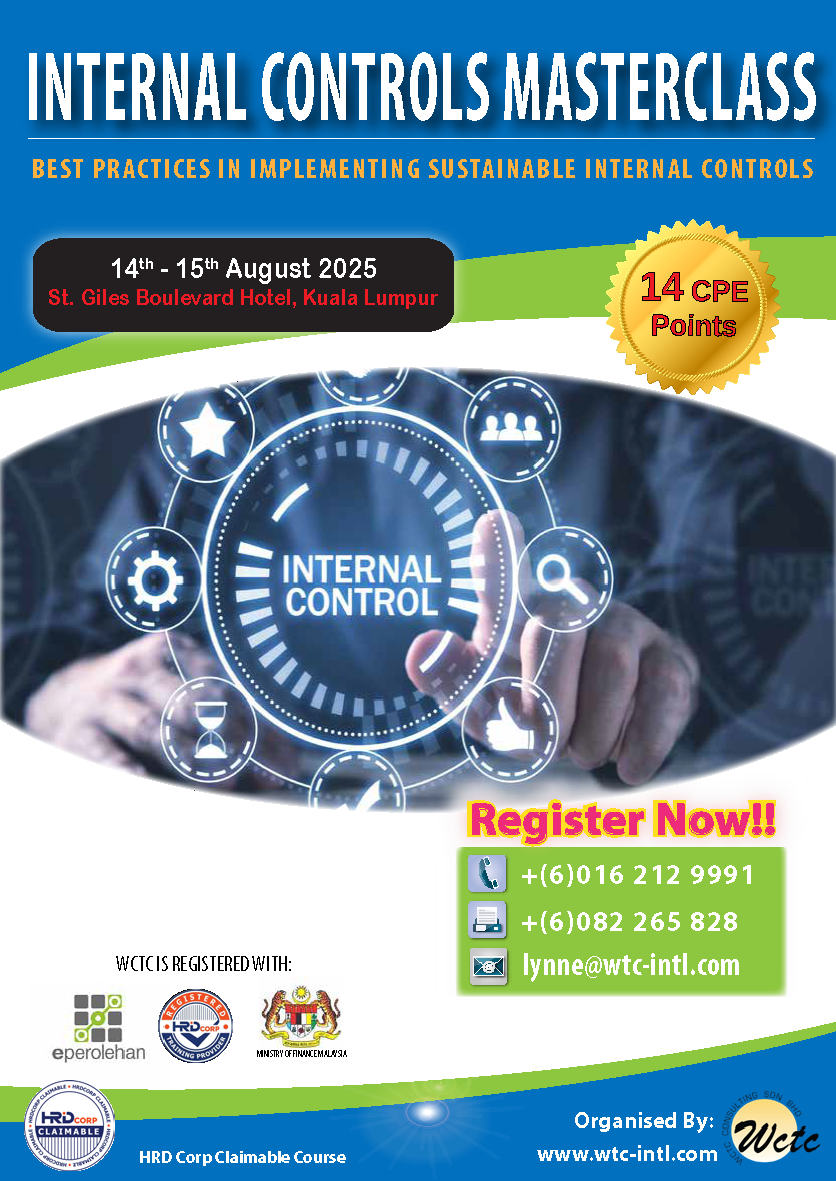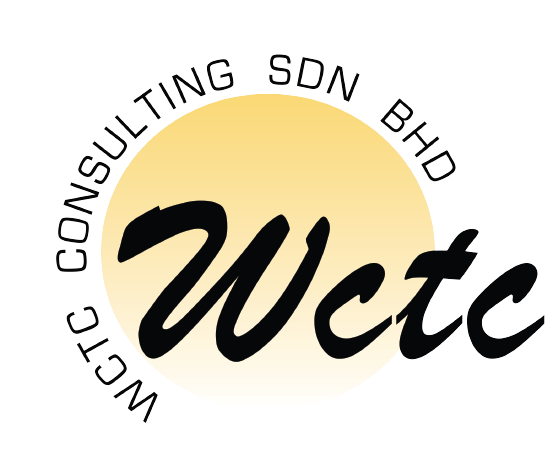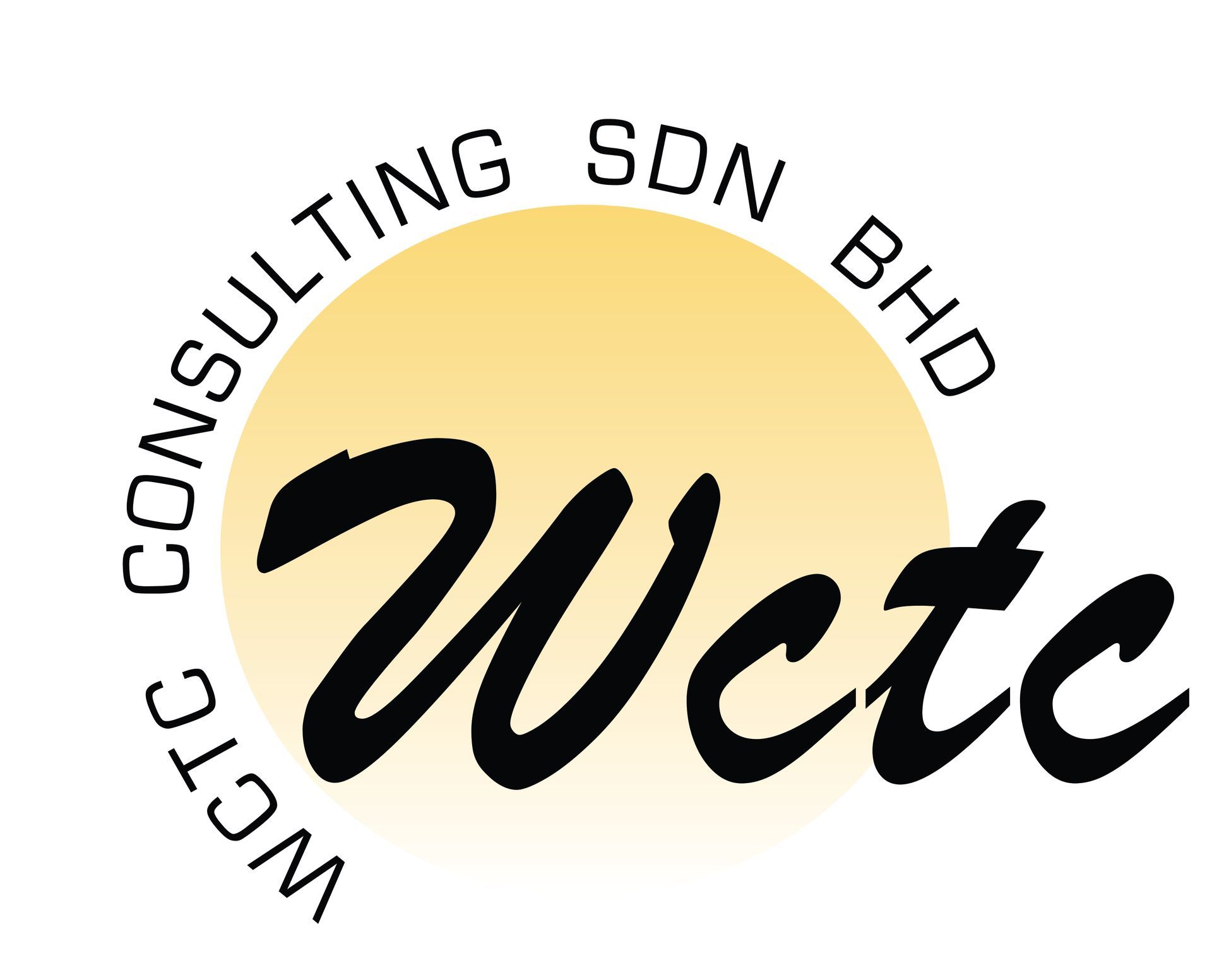Internal Controls Masterclass (14 - 15 August 2025) St. Giles Boulevard Hotel, Kuala Lumpur
OVERVIEW
In recent years, the issue of “internal control” has become more significant within organisation. How to strengthen your internal control system? A strong internal control system is one of the best mitigation strategies for managing internal operational and financial risks. Effective internal controls can assist an organisation to protect itself against misuse, loss of its assets and also manage its assets in a more effective and efficient manner. Additionally, putting the right effective internal controls in place can help alert management to potential problems, reducing the probability of unnecessary financial loss due to operational or regulatory non-compliance issues.
This workshop aims to convince you of the importance of effective internal controls for financial, operational and compliance reasons with a practical focus to enable you to apply effective control practices at your workplace.
Attending this 2-day instructor-led training programme will equip you with relevant risks and controls knowledge to enable you to identify control weaknesses, as well as implement effective control activities for the common core business processes (namely procurement, payment, revenue, receipts, inventory and fixed asset management) found in a typical organisation. You will also learn to develop your own Internal Controls Checklists to evaluate internal control practices currently implemented in your organisation.
LEARNING OBJECTIVES
- INTERPRET Fundamental And Important Internal Controls
- IDENTIFY The Importance And Limitations Of Internal Controls
- EVALUATE The Objectives Of Implementing Internal Controls
- DISPLAY Internal Controls Within Existing Processes To Mitigate And Detect Fraud And Errors
- EXPLAIN The Design And Operating Effectiveness Of Existing Internal Control Practices
- IDENTIFY The Five (5) Components Of Internal Control
- DISCOVER The Components Of An Effective Control Environment
- LEARN About The Ten (10) Most Commonly Implemented Control Activities To Manage Potential Operational And Financial Risks
- ASCERTAIN The Significance Of Information & Communication And Monitoring Controls
- IDENTIFY The Key Risks Areas Of The Procurement, Payment, Revenue, Receipts, Inventory And Fixed Assets Management Processes
- DETERMINE The Control Objectives Pertaining To The Relevant Sub-Processes
- IMPLEMENT Effective Key Control Activities For Each Of The Aforesaid Business Processes And Sub-Processes
- LEARN To Develop Your Own Internal Controls Checklists To Evaluate Existing Internal Controls With Provided Templates

Other Workshops:

OVERVIEW Protect Your Business Against Expensive Malpractices and Fraudulent Behaviour The rise in contract management and the outsourcing of goods and services has created an increase in procurement fraud, which can occur at any stage of the contracting and procurement process. Appropriate controls, fraud prevention strategies and proper tendering processes are necessary in the fight against this fraud. It is important to remember that maintenance of financial controls remains critical in this age of digitalisation. Public and private sectors must continue to comply with legal responsibilities and related guidance on financial governance. It is essential that all staff maintain financial records and decision logs – regardless of any circumstances - so that audit trails are preserved . Procurement, finance, and payroll staff, as well as those who requisition or authorise the purchase of goods, services and works should familiarise themselves with the controls set out to prevent fraud , identify key parameters for auditors in assessing the risk of sub-optimal procurement, and how they should prioritise and conduct their audits to check if these risks have materialised, including the risk of fraud and corruption. Procurement fraud can occur through departmental purchasing of goods and services, as well as through contractual arrangements with external service providers. It can occur in many different ways. Fraud within the procurement life cycle is high risk and can result in recurring losses. You may be at risk due to fraudulent activities conducted by internal staff, collusion between internal staff and external service providers or external service provider or industry collusion. This workshop offers insight into the specific risks and possible management techniques in procurement in good or tough times. This 14 hours training programme would equip participants with the knowledge, skills, and techniques to deter, prevent, and detect various devastating types of fraud. JOIN US to learn how to identify procurement fraud situations, uncover rogue operatives and threats and provide a higher level of transparency and control over all elements of your purchasing requirements.



